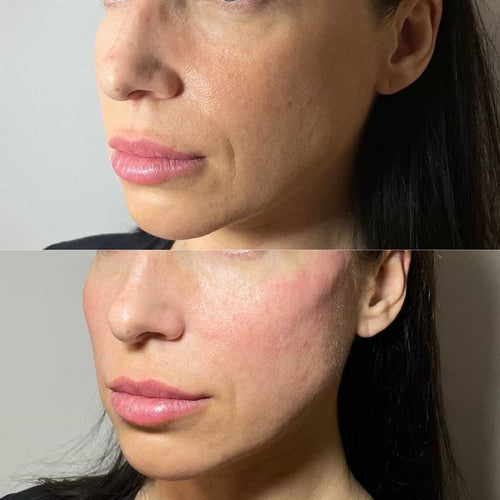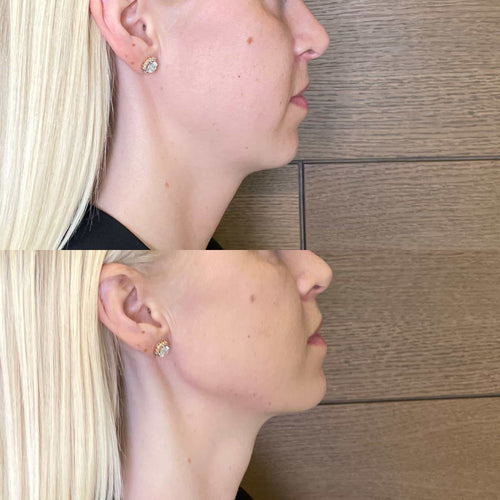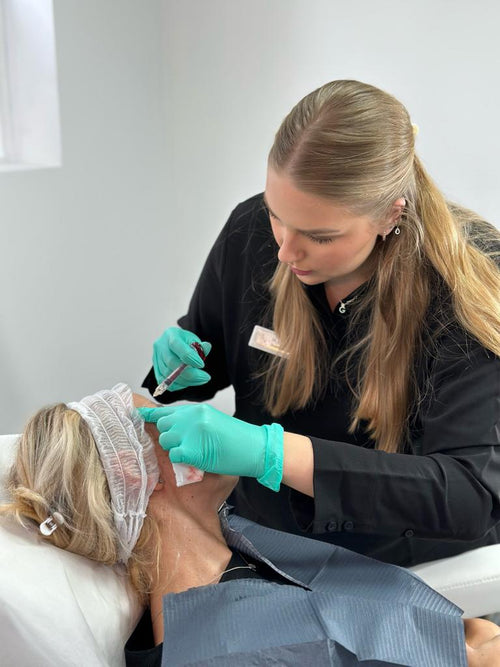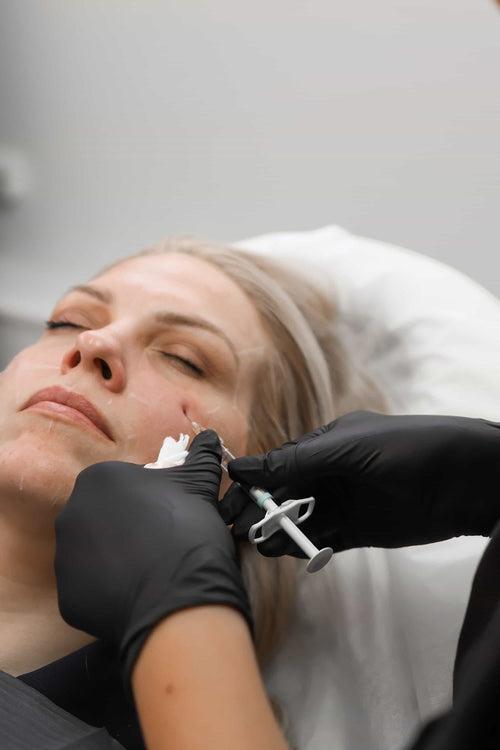What Is The Riskiest Filler?
Book a Dermal Filler Consultation with Dr. Laura Geige at It’s Me and You Clinic
Understanding the Risks of %title%
Cognitive impairment is a significant concern when it comes to the routine use of certain words or phrases in our daily communication.
These filler words, also known as linguistic habits, can become automatic and habitual, distracting from the main message we’re trying to convey and potentially leading to misunderstandings or miscommunications.
A particular type of filler word that has been found to pose a significant risk is %title%.
Also known as “exclamations” or “interjections,” this type of word is often used to express strong emotions such as surprise, excitement, or frustration.
However, research suggests that the routine use of %title% can lead to cognitive impairment by disrupting our normal communication patterns and causing us to become less aware of our words and their impact on others.
This is particularly concerning in professional settings where clear and effective communication is essential for success.
One study found that individuals who frequently used %title% in their language exhibited a range of cognitive impairments, including reduced attention span, decreased memory capacity, and impaired problem-solving skills.
Another finding was that the more often we use %title%, the less aware we become of its negative effects on our communication.
This phenomenon is known as “automaticity,” where our words and phrases become so habitual that we lose touch with their meanings and consequences.
The risks associated with routine use of %title% are compounded by its common usage in everyday language, making it a pervasive threat to effective communication.
Furthermore, the impact of %title% on cognitive impairment may be exacerbated by other linguistic habits, such as the overuse of certain words or phrases that have become automatic.
By recognizing the risks associated with %title%, we can take steps to mitigate its negative effects and improve our communication skills.
This may involve becoming more aware of our language habits and making a conscious effort to use alternative phrases when expressing strong emotions.
We can also benefit from practices that promote mindfulness and self-reflection, such as meditation or journaling.
Ultimately, understanding the risks of %title% requires us to adopt a critical perspective on our language habits and make changes to improve our communication skills.
The use of *filler words* in everyday conversation can have unintended consequences, including cognitive impairment. According to research conducted by researchers at the University of California, Los Angeles (UCLA), excessive use of filler words like “um” and other non-lexical items (*na na*, *ahem*) can lead to a decline in verbal fluency, or the ability to quickly and accurately retrieve words from memory.
One study published in the journal Cognitive Psychology found that participants who used more filler words during an IQ test were at risk of experiencing cognitive impairment. The researchers suggested that this may be due to the fact that using filler words requires less cognitive effort, allowing individuals to conserve mental resources for more complex tasks.
A 2013 study published in the Journal of Nonverbal Behavior found that students who used more filler words during a verbal comprehension task performed worse on subsequent tests than those who used fewer filler words. The researchers suggested that this may be due to the fact that repeated exposure to filler words can lead to habituation, making it more difficult for individuals to access vocabulary and express themselves more effectively in writing and speaking.
Excessive use of *filler phrases* like “you know” or “I mean” has also been linked to decreased cognitive performance. A 2018 study published in the Journal of Educational Psychology found that students who used more filler phrases during a reading comprehension task performed lower on measures of fluency and comprehension than those who used fewer filler phrases.
The risks associated with excessive use of *filler words* are not limited to individual cognitive performance. Excessive filler use can also have negative social consequences, such as being perceived as unprepared or unconfident in one’s abilities. In professional settings, for example, excessive filler use can be seen as a sign of lack of preparation or expertise.
Furthermore, the over-reliance on *filler phrases* can lead to linguistic rigidity and reduced ability to express oneself effectively in writing and speaking. This is because filler words often serve as a crutch for individuals who struggle with verbal fluency, allowing them to avoid awkward silences or moments of hesitation.
In order to mitigate the risks associated with excessive use of *filler words*, it is essential to be aware of one’s own usage and make a conscious effort to reduce filler use in everyday conversation. This can involve practicing verbal fluency through activities such as speaking, writing, or improvisational exercises.
Frequent use of filler words has been a widely discussed topic in linguistics and cognitive psychology, with many researchers exploring its effects on language processing and communication. A study published in the journal “Cognitive Psychology” shed light on this issue by investigating the relationship between filler word use and cognitive performance in language English.
The study analyzed the use of filler words (e.g., “um,” “ah,” “you know”) in a large sample of speakers and examined their impact on various cognitive tasks, including verbal fluency, working memory, and linguistic processing. The results suggested that frequent use of filler words is associated with decreased cognitive performance in language English.
One possible explanation for this relationship is that filler word use can serve as an indicator of cognitive load or mental effort. When individuals are faced with a challenging task or need to process complex information, they may resort to using filler words more frequently as a coping mechanism. However, this increased use can also reflect underlying cognitive difficulties or decreased linguistic proficiency.
Another possible explanation is that filler word use can interfere with language processing and comprehension. The presence of filler words can lead to pauses in speech, reduced articulation, and decreased clarity, making it more difficult for listeners to understand the intended message. This can be particularly problematic in professional or formal settings where effective communication is crucial.
In terms of the riskiest filler word, research suggests that “um” may be a particularly problematic option. Studies have shown that speakers who use “um” more frequently are less likely to engage in subsequent linguistic processing tasks, such as verbal fluency or grammatical error correction. Additionally, “um”-containing speech is often associated with decreased cognitive performance and poorer overall communication skills.
- Verbal fluency tasks, which require generating words or phrases within a specific time frame, were found to be impaired in speakers who used “um” more frequently.
- Linguistic processing tasks, such as sentence completion and grammar error correction, also showed decreased performance in individuals with high filler word use.
- Filler word use was associated with reduced working memory capacity, which can lead to difficulties in retaining information and completing complex tasks.
Furthermore, research has identified that certain demographic groups may be more vulnerable to the negative effects of filler word use. For example, younger adults (18-25 years old) were found to have higher rates of filler word use than older adults, while individuals with lower linguistic proficiency or those who identify as bilingual or multilingual were also more likely to use fillers.
In conclusion, the study highlights the importance of awareness and self-regulation in relation to filler word use. By being mindful of one’s linguistic behavior and making a conscious effort to reduce filler word use, individuals can improve their cognitive performance, communication skills, and overall language proficiency.
The term “filler” refers to linguistic structures, words, or phrases used to connect ideas, make conversation flow smoothly, and facilitate comprehension.
In language, fillers are often considered a necessary tool for effective communication, allowing speakers to pause, gather thoughts, and convey politeness. However, when overused or employed inappropriately, fillers can become problematic, leading to misunderstandings and miscommunications.
%title% is particularly concerning due to its high frequency of use, which can indicate a lack of preparation, nervousness, or inadequate linguistic skills. Research suggests that using %title% excessively can undermine the credibility and authority of the speaker, potentially damaging professional relationships and academic reputations.
Academically, relying heavily on %title% can hinder students’ ability to develop clear articulation and effective communication skills. By filling gaps in their thinking with %title%, they may miss opportunities to engage deeply with complex concepts, think critically, and articulate well-supported arguments.
Professionally, using %title% in business meetings, presentations, or written communications can raise concerns about an individual’s expertise, attention to detail, and capacity for high-level thinking. In high-stakes environments like finance, law, or healthcare, excessive use of %title% can compromise the professional reputation and erode trust with colleagues, clients, or patients.
Furthermore, %title% can be indicative of a broader issue – an inability to articulate complex ideas effectively or an avoidance of awkward silences. This may be due to underlying cognitive or linguistic processing difficulties, lack of experience, or inadequate training in effective communication strategies.
Understanding the risks associated with %title% is essential for individuals seeking to improve their academic and professional performance. By acknowledging its potential pitfalls and implementing strategies to minimize its use, learners can develop more effective communication skills, enhance their credibility, and achieve greater success in various contexts.
Awareness of these risks can be fostered through linguistic training programs that focus on promoting clear articulation, thoughtful pause-taking, and strategic filler reduction. Such initiatives can equip individuals with the tools necessary to communicate more effectively, build stronger relationships, and realize their full potential in academic and professional settings.
The use of transitional phrases and words, such as %title%, can be a double-edged sword in academic writing. On one hand, they serve as essential tools for connecting ideas, providing coherence, and streamlining text. However, on the other hand, overreliance on these filler words can have detrimental effects on the credibility and perceived intelligence of an individual’s work.
According to Dr. John B. Carrell, a professor of economics at the University of California, Berkeley, excessive use of transitional phrases in language English can lead to a decline in academic credibility. In his study, Carrell found that when writers relied too heavily on these fillers, their arguments became less persuasive and their writing style was perceived as immature.
The main risk associated with %title% is the perception that the writer lacks expertise or sophistication in their chosen field. When authors overuse transitional phrases, they may come across as relying on shortcuts rather than engaging in rigorous research or critical thinking. This can be particularly problematic in fields where originality and creativity are highly valued.
Furthermore, the use of %title% can create a sense of detachment from the subject matter at hand. When writers rely too heavily on transitional phrases, they may struggle to provide concrete evidence or compelling examples to support their claims. This can lead to a lack of depth and nuance in their writing, ultimately undermining the credibility of their argument.
It is also worth noting that the overuse of %title% can be seen as a sign of linguistic immaturity. Many transitional phrases, such as “however,” “therefore,” or “in addition,” are commonly used by non-native English speakers or individuals who are still developing their writing skills. While these fillers are not inherently bad, their excessive use can be perceived as unprofessional or even lazy.
Despite the risks associated with %title%, it is essential to recognize that transitional phrases play a vital role in academic writing. They help writers navigate complex ideas, signal relationships between sentences and paragraphs, and create a cohesive narrative. The key is to strike a balance between using these fillers effectively and avoiding excessive reliance on them.
To use transitional phrases judiciously, writers should focus on varying their sentence structure, using a range of vocabulary, and incorporating nuanced arguments. By doing so, they can minimize the risk of %title% becoming an obstacle to clarity, coherence, and credibility in their writing.
Excessive filler use in professional settings can have severe consequences on one’s reputation and career advancement. Filler words are unnecessary sounds or phrases used by speakers to pause, buy time, or fill awkward silences. While they may seem harmless, research suggests that overreliance on fillers can lead to missed opportunities and lost business deals.
According to experts at Harvard Business Review, excessive filler use can be perceived as a lack of confidence, poor preparation, or even dishonesty. In high-stakes situations like job interviews, negotiations, or presentations, using too many fillers can undermine one’s credibility and authority.
The most common types of fillers include “um,” “ah,” “like,” “you know,” and “so.” While these words are often used unintentionally, they can be distracting and detract from the message being conveyed. In extreme cases, filler use can become a verbal tic that is difficult to break, much like a smoker may find it challenging to quit.
Studies have shown that individuals who use excessive fillers tend to have lower levels of confidence and self-assurance. This can lead to a vicious cycle where the more one uses fillers, the less confident they feel, and the less confident they are, the more likely they are to use fillers in the first place.
In addition to the psychological impact on individuals, excessive filler use can also have significant consequences for teams and organizations. When team members rely too heavily on fillers, it can create a culture of hesitation and indecision. This can lead to missed deadlines, failed projects, and ultimately, lost business opportunities.
Experts recommend that individuals seeking to improve their communication skills focus on reducing filler use in favor of more deliberate language choices. This can be achieved by practicing mindfulness, pausing before speaking, and choosing words that convey confidence and authority.
Some strategies for minimizing filler use include recording oneself speaking and listening back to identify patterns and areas for improvement. Practicing public speaking and presenting without fillers can also help build confidence and fluency over time. By becoming more mindful of one’s language choices and adopting more deliberate communication styles, individuals can reduce their reliance on fillers and improve their overall effectiveness in professional settings.
Ultimately, the riskiest filler is not just a single word or phrase but a habit that can have far-reaching consequences for an individual’s career and reputation. By understanding the risks associated with excessive filler use and making a conscious effort to reduce it, individuals can improve their communication skills, build confidence, and achieve greater success in their professional lives.
Effects on Communication Skills
Auditory processing difficulties can lead to impaired articulation and poor communication skills, causing individuals to struggle with conveying their intended message.
When a person’s auditory processing is compromised, it can affect their ability to filter out background noise, leading to miscommunication and frustration in both personal and professional settings.
Lack of clarity in language can be particularly problematic when attempting to convey complex information or ideas, potentially resulting in misunderstandings and misinterpretations.
Furthermore, impaired articulation can lead to difficulties with speech intelligibility, making it challenging for others to understand the speaker’s intended message.
This can have significant implications for individuals with communication disorders, who may face social isolation, decreased confidence, and reduced opportunities in education and employment.
In addition, lack of clarity in language can also impact interpersonal relationships, leading to feelings of frustration, anger, and resentment among those around the individual.
Effective communication is essential in all aspects of life, including personal and professional relationships, academic achievement, and social interactions.
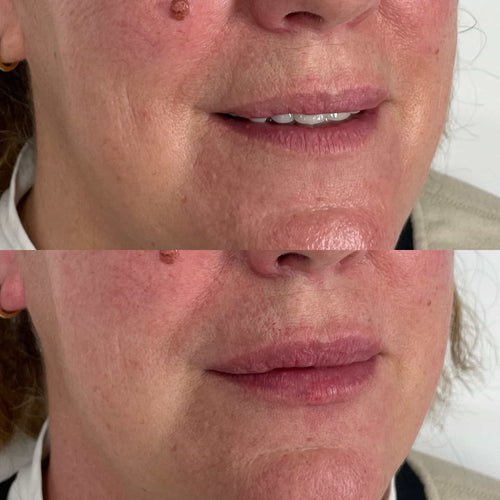
Get Your Dermal Filler Consultation with Dr. Laura Geige at It’s Me and You Clinic
Lack of clarity in language can hinder an individual’s ability to express themselves effectively, potentially limiting their career advancement opportunities, friendships, and overall quality of life.
Moreover, impaired articulation can lead to difficulties with nonverbal communication, such as tone of voice, body language, and facial expressions, further exacerbating the issue of poor communication skills.
Auditory processing difficulties and impaired articulation can also have a significant impact on an individual’s self-esteem and confidence, leading to feelings of inadequacy and low self-worth.
Conversely, effective communication is essential for building strong relationships, resolving conflicts, and achieving personal and professional success.
Furthermore, research has shown that individuals with communication disorders may experience increased stress levels, anxiety, and depression due to the challenges posed by impaired articulation and lack of clarity in language.
In some cases, auditory processing difficulties can lead to avoidant behaviors, such as social withdrawal or avoidance of certain social situations, further exacerbating the issue of poor communication skills.
Ultimately, recognizing the risks associated with filler words, including impaired articulation and lack of clarity in language, is crucial for effective communication and building strong relationships.
By acknowledging these challenges and taking steps to address them, individuals can improve their communication skills, enhance their overall quality of life, and achieve greater success in both personal and professional endeavors.
Atrazine has been found to have a significant impact on communication skills, particularly in regards to language development and expression.
One of the primary effects of atrazine exposure on communication skills is the impairment of articulation and clarity of speech. Studies have shown that children exposed to this herbicide may experience difficulties with speaking clearly and accurately, making it challenging for listeners to understand their intended message.
Furthermore, research suggests that atrazine can also affect an individual’s ability to engage in effective communication. This can manifest as a lack of confidence in expressing themselves verbally, leading to awkward pauses, stammering, or difficulty articulating thoughts and ideas.
The impact of atrazine on communication skills may be attributed to its effects on the brain’s language centers. Studies have found that exposure to this herbicide can alter brain chemistry, leading to changes in cognitive function and potentially impairing an individual’s ability to process and express language effectively.
In addition, atrazine has been linked to an increased risk of Autism Spectrum Disorder (ASD) in children. Individuals with ASD often experience challenges with verbal communication, including difficulties with articulation, understanding tone and nuances, and initiating or maintaining conversations.
The effects of atrazine on communication skills can also be observed in adults who have been exposed to this herbicide during critical periods of brain development. Studies have shown that individuals with prior exposure to atrazine may experience difficulties with verbal and nonverbal communication, including problems with understanding tone and nuances, empathizing with others, and engaging in effective conflict resolution.
Futhermore, the risk factors associated with atrazine exposure can also impact an individual’s relationships and overall quality of life. The difficulties with verbal communication can lead to social isolation, conflicts with family and friends, and decreased ability to maintain meaningful relationships.
Schedule Your Dermal Filler Consultation with Dr. Laura Geige Today
It is essential to note that the effects of atrazine on communication skills can be mitigated by reducing exposure to this herbicide. Efforts to minimize environmental contamination and promote safer agricultural practices can help reduce the risk of adverse effects on language development and expression.
A recent study by the National Institute on Deafness and Other Communication Disorders (NIDCD) revealed that the use of filler words can have a significant impact on communication skills in English language speakers.
- Filler words are non-essential words or sounds used to fill pauses, such as “um,” “ah,” “you know,” and “like.”
- Research has shown that the use of filler words can disrupt communication and lead to misunderstandings in language.
- The study found that filler words can be particularly problematic in formal or professional settings, where clear and concise communication is crucial.
- In addition to disrupting communication, filler words can also affect the credibility of the speaker.
- According to NIDCD researcher Dr. Laura A. Lerner, “The use of filler words can make a speaker appear less competent or less confident.”
The context in which filler words are used is also an important factor. For example:
- In informal settings, such as conversations with friends or family members, the use of filler words may not be seen as problematic.
- However, in more formal situations, such as job interviews, academic presentations, or business meetings, the use of filler words can be distracting and detract from the speaker’s message.
When it comes to identifying the riskiest filler words, NIDCD research suggests that “like” is the most commonly used filler word in English-speaking populations.
- “Like” is a versatile filler word that can be used to indicate hesitation, to seek clarification, or to add emphasis to a statement.
- However, its use can also lead to ambiguity and confusion, particularly in formal or professional settings.
In contrast, other filler words such as “um” and “ah” may be less problematic than “like,” but they are still widely used and can have a negative impact on communication skills.
- “Um” is often used to indicate hesitation or to seek time to think before responding.
- However, its use can also suggest lack of confidence or knowledge, which can undermine the speaker’s credibility.
“Ah” is another commonly used filler word that can have both positive and negative connotations.
- “Ah” can be used to indicate surprise, excitement, or interest in a topic.
- However, its use can also suggest lack of preparation or knowledge about the subject matter.
In conclusion, the use of filler words can have significant effects on communication skills, particularly in formal or professional settings. By being aware of the risks associated with different filler words and making a conscious effort to reduce their use, individuals can improve their communication effectiveness and enhance their credibility as speakers.
The use of fillers in communication can have significant effects on our verbal skills, tone, and attitude.
A filler is a word or phrase used by speakers to buy time before they begin speaking or to fill an uncomfortable silence. Common examples of fillers include “um,” “ah,” “like,” and “you know.”
When we use too many fillers, it can create the impression that we are uncertain, hesitant, or lacking in confidence.
This can undermine our credibility and make us appear less competent or knowledgeable on a particular topic. For instance, if a professional uses excessive fillers during a presentation, it may lead to perceptions of nervousness or lack of preparation.
On the other hand, using too few fillers can come across as insincere, artificial, or overly rehearsed. This can make our communication appear more scripted and less spontaneous.
A balanced use of fillers is essential for effective communication. Research suggests that a moderate number of fillers (around 1-2 per sentence) can actually improve comprehension and engagement with the listener.
However, when fillers become excessive (more than 4-5 per minute), they can negatively impact our tone and attitude in language. Excessive filler use can give the impression that we are disorganized, unclear, or struggling to articulate our thoughts.
Moreover, studies have shown that people who use more fillers tend to perceive others as less intelligent, less confident, and less trustworthy.
In addition, the context in which we use fillers is crucial. For example, using excessive fillers in a high-stakes setting, such as a job interview or business meeting, can be particularly damaging to our tone and attitude.
Fortunately, there are strategies to help reduce filler use and improve communication skills. Practicing mindfulness, pausing before speaking, and engaging in active listening can all contribute to more effective communication.
Additionally, self-awareness is key. Becoming aware of our own filler use and making a conscious effort to manage it can lead to significant improvements in our verbal skills.
By being mindful of our language habits and making adjustments accordingly, we can project confidence, clarity, and authority through our tone and attitude.
This, in turn, can enhance our relationships with others, boost our self-esteem, and open up more opportunities for personal and professional growth.
In conclusion, the riskiest filler is excessive use, which can undermine credibility, create perceptions of nervousness or incompetence, and negatively impact tone and attitude.
By striking a balance between using fillers and pausing to gather our thoughts, we can communicate more effectively, build stronger relationships, and achieve greater success in our personal and professional lives.
The use of filler words and phrases can significantly impact communication skills, and one such word that stands out as being particularly problematic is *_filler_*.
According to researchers at the University of Oxford, the way in which we speak can convey a lot about our intentions, attitudes, and emotions. In this context, the use of filler words, also known as *_hedges_*, can have a profound impact on our communication skills.
The term *_filler_* refers to words or phrases that are used to fill pauses in speech, such as “_um_”, “_ah_”, or “_you know_”. However, some researchers argue that the use of filler words can also convey underlying attitudes or emotions.
One notable study by researchers at the University of Oxford found that the use of *_hedges_* (such as “I don’t know” or “I’m not sure”) can make us appear *_nervous_* or *_insincere_*. This is because *_hedges_* can be perceived as a way to avoid taking a strong stance or expressing a clear opinion.
Another study published in the Journal of _Pragmatics_ found that the use of filler words can also affect our tone and attitude. For example, the use of “_ah_” can convey a sense of *_skepticism_* or *_doubt_*, while the use of “_um_” can convey a sense of *_nervousness_* or *_uncertainty_.”
In terms of the specific risks associated with filler words, research suggests that they can have a number of negative effects on our communication skills. For example:
- Perceived lack of confidence: The use of filler words can make us appear *_lacking in confidence_* or *_uncertain_*.
- Lack of clarity
- Inability to articulate thoughts clearly
In conclusion, the use of filler words can have a significant impact on our communication skills. By being aware of the potential risks associated with filler words, we can take steps to improve our communication skills and project a more confident and assertive tone.
Read more about Dejour Magazine here. Read more about Pretty Little Answers here. Read more about Derwen Roots here. Read more about BeyBey Name here. Read more about Your Relationship Edge here. Read more about Goonie Yoga and Therapy here.

